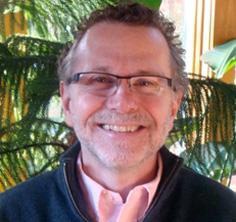John H. Martin
Medical Professor
Additional Departments/Affiliated Programs
Molecular, Cellular and Biomedical Sciences
Building
Center for Discovery and Innovation
Office
3/302
Phone
212-650-7964
212-650-5956
Fax
212-650-6752

John H. Martin
Education
Ph.D., 1978, Columbia University
B.A., 1973, University of Rhode Island
Research Interests
Development and Repair of the Motor Systems of the Brain and Spinal Cord
Development of the motor systems of the brain and spinal cord
Development of motor behavior
Repair of the damaged motor systems
Promoting axon regeneration after brain and spinal cord injuries
Movement control
My laboratory studies how the nervous system controls our movements, such as walking and reaching, from the dual perspectives of brain development and recovery of movement function after brain or spinal injury. Our studies focus on the connections between the cerebral cortex and the spinal cord that control movements. We are interested in the mechanisms by which the specificity of these connections are established during development. We use a variety of animal models to study this question, including genetic approaches. We have discovered the importance of activity- and use-dependent plasticity in development of connectional specificity in the cortical motor systems.
When connections between the cerebral cortex and the spinal cord become damaged, such as after a stroke or a spinal cord injury, the person becomes weak and even paralyzed when the damage is severe. Other studies in my lab aim to repair the motor systems after injury, to restore the connections for movement. We also use animal models to study the problem of neural repair. Ultimately we aim to translate what we learn in the animal to devise therapies for humans with mobility impairments.
My laboratory is currently supported by an NIH R01 grant for the development research, a second NIH R01 grant for the repair studies, and a grant from the Craig H. Neilsen Foundation.
Publications
Selected articles
Serradj N, Paixão S, Sobocki T, Feinberg M, Klein R, Kullander K, Martin JH. EphA4-mediated ipsilateral corticospinal tract misprojections are necessary for bilateral voluntary movements but not bilateral stereotypic locomotion. Journal of Neuroscience (2014) in press
Williams P, Kim S, Martin JH. Postnatal maturation of the red nucleus motor map depends on rubrospinal connections with forelimb motor pools. Journal of Neuroscience (2014) 34:4432-4441.
Carmel JB, Kimura H, Martin JH. Electrical Stimulation of Motor Cortex in the Uninjured Hemisphere after Chronic Unilateral Injury Promotes Recovery of Skilled Locomotion through Ipsilateral Control. Journal of Neuroscience (2014) 34:462-466.
Paixão S, Balijepalli A, Serradj N, Martin JH, Klein R. EphrinB3/EphA4-mediated guidance of ascending and descending spinal tracts. Neuron (2013) 80: 1407 - 1420.
Asante C, Martin JH. Differential Joint-Specific Corticospinal Tract Projections within the Cervical Enlargement. PLoS ONE (2013) 8(9): doi:10.1371/journal.pone. 0074454
Carmel JB, Berrol LJ, Martin JH. Motor cortex electrical stimulation promotes axon outgrowth in a competition-dependent manner to brain stem and spinal targets that control the forelimb impaired by injury. European J Neurosci (2013) 37:1090-1102.
Tan A, Chakrabarty S, Martin JH. Selective Corticospinal Tract Injury in the Rat Induces Primary Afferent Fiber Sprouting in the Spinal Cord and Hyperreflexia. J. Neuroscience (2012) 32(37):12896 –12908.
Friel KM, Chakrabarty S, Kuo H-C, Martin JH. Using motor behavior during an early critical period to restore skilled limb movement after damage to the corticospinal motor system during development. J. Neuroscience (2012) 32:9265-9276.
Asante C, Chu A, Fisher M, Benson L, Beg A, Scheiffele P, Martin JH. Cortical control of adaptive locomotion in wild type mice and mutant mice lacking the Ephrin-Eph effector protein alpha2-Chimaerin. J. Neurophysiology (2010) 104:3189-3202.
Carmel JB, Berrol LJ, Brus-Ramer M, Martin JH. Chronic Electrical Stimulation of the Intact Corticospinal System After Unilateral Injury Restores Skilled Locomotor Control and Promotes Spinal Axon Outgrowth. J. Neurosci. (2010) 30:10918-10926.
Chakrabarty S, B, Martin JH. Postnatal development of segmental switch enables corticospinal tract transmission to spinal forelimb motor circuits. J Neurosci. (2010) 30:2277-2288.
Chakrabarty S, Shulman, B, Martin JH. Activity-dependent co-development of the corticospinal system and target interneurons in the cervical spinal cord. J Neurosci. (2009) 29:8816-8827.
Salimi I, Friel K, Martin JH. Pyramidal tract stimulation restores normal corticospinal tract connections and visuomotor skill after early postnatal motor cortex activity blockade. J Neurosci (2008) 28:7426-7434.
Campos L, Chakrabarty S, Haque R, Martin JH. Regenerating Motor Bridge Axons Refine Connections and Synapse on Lumbar Motoneurons to Bypass Chronic Spinal Cord Injury. J. Comp. Neurology (2008) 506:838-850.
Brus M, Carmel JB, Chakrabarty S, Martin JH. Electrical Stimulation of Spared Corticospinal Axons Augments Connections with Ipsilateral Spinal Motor Circuits After Injury. J. Neuroscience (2007) 27:13793-13801.
Friel K, Martin JH. Rebalancing corticospinal activity promotes recovery of motor skill and anatomical integrity after inactivation during a critical period. J. Neuroscience (2007) 27:11083-11090.
Beg AA, Sommer JE, Martin JH, Scheiffele P. Alpha2-chimaerin is an essential EphA4 adapter in the assembly of neuronal locomotor circuits. Neuron (2007) 55:768-778.
Courtine G, Bunge MB, Fawcett JW, Grossman RG, Kaas JH, Lemon R, Maier I, Martin J, Nudo RJ, Ramon-Cueto A, Rouiller EM, Schnell L, Wannier T, Schwab ME, Edgerton VR. Can experiments in nonhuman primates expedite the translation of treatments for spinal cord injury in humans? Nat Med (2007) 13:561-566.
Campos L, Meng Z, Hu G, Chiu D, Ambron RT, Martin JH. Engineering novel spinal circuits to promote recovery after spinal injury. J Neuroscience (2004) 24:2090-2101.
Martin, JH, Choy M, Pullman S, Meng Z. Corticospinal development depends on motor experience. J Neuroscience (2004) 24:2122-2132.
Meng Z, Li Q, Martin, JH The transition from development to motor function in the corticospinal system. J Neuroscience (2004) 24: 605-614.
Selected textbook, book chapters, and review articles
Martin, JH Neuroanatomy: Text and Atlas, 4th ed. McGraw-Hill, NY (2012).
Martin JH, Friel K, Salimi I, Chakrabarty S. Corticospinal Development. In: Encyclopedia of Neuroscience, volume 3, pp. 302-214. (Ed) L. Squire. Oxford: Academic Press. (2009).
Martin JH. Systems Neurobiology of Restorative Neurology and Future Directions For Repair of the Damaged Motor Systems. Clinical Neurology and Neurosurgery (2012) 114:515-523.
Martin JH Corticospinal system: from development to motor control. The Neuroscientist 11:161-173, 2005.